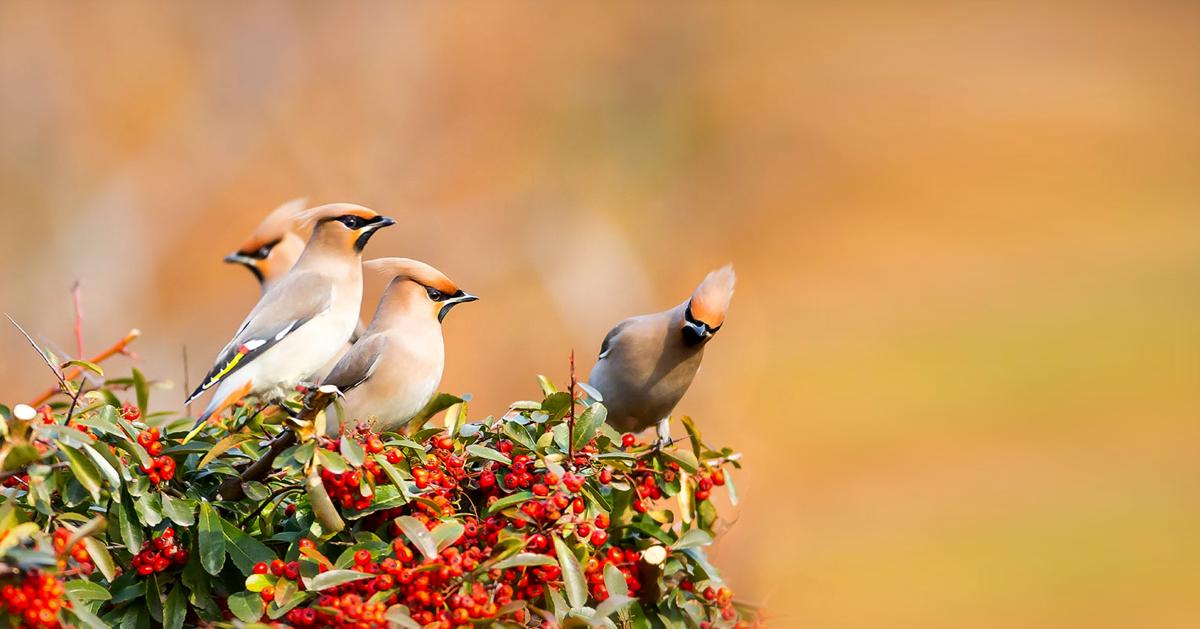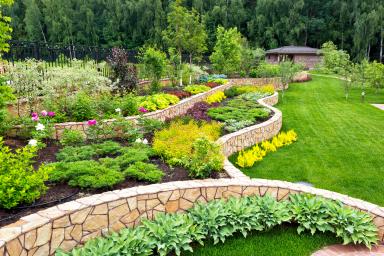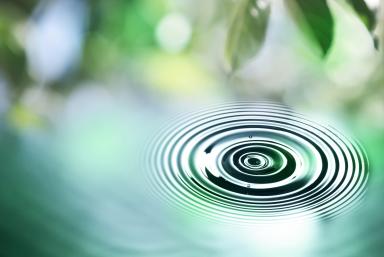A Beginner's Guide To Bird Watching

Bird watching is a fantastic way to spend time outdoors and can be done year-round in many places. Not only is it a fun and wholesome hobby, but getting outdoors and connecting with the beauty of nature provides a hearty boost to both physical and mental health.
Some people may feel bird watching — also known as "birding" — isn't easy to get into and that they may need to start by investing in expensive binoculars. However, this isn't the case! This nature-centric hobby is accessible to just about everyone and can also be a very low-cost pastime. North America alone has had over 900 recorded bird species, giving you plenty to discover right in your own backyard.
So, no matter where you reside, there are birds for you to watch, identify, and learn about. Our handy guide will provide you with an overview of bird watching. We'll cover the basics of how to get started, how to get yourself more set up, and how to truly level up if you'd like to commit more fully to birding.
Getting Started
Bird watching can seem intimidating, the same as it is when picking up any new hobby or skill. Getting started, however, is as simple as taking an interest and using the tools you have at hand.
Learn About Your Local Birds
To get started with bird watching, all you have to do is step outside — or peer through a window. Then, start taking note of the birds you see, where they like to hang out, what sounds they make, what things they seem to eat.
You might be surprised to find out that there are likely dozens of bird species right in your neighborhood. As you walk around, keep your eyes peeled for the different birds you see, especially if you live near a pond, park, or even a small grove of trees. As you move between different local habitats, you'll get to observe all kinds of other birds while staying close to home.
Get Your Timing Right
Many birds sleep through the night and get up early to get their first meal of the day. As such, it's helpful if you are a "morning person" or can become one! After all, it's the early bird who catches the worm.
There is also the season to keep in mind, as many birds are migratory, traveling long distances during spring and fall. Consequently, you may only be able to spot some birds in summer, some in winter, and others perhaps just briefly during their migratory periods. Luckily, you are also likely to have some year-round residents in your area that you can always count on!
Choose A Bird Guide
To fully appreciate the birds in your area — particularly if you'd like to identify birds that you don't already know — it is helpful to get your hands on a bird guide. A bird guide is any resource that helps its readers identify and learn about specific bird species, including books, websites, and mobile apps.
If you'd prefer a physical copy to thumb through, the Peterson Field Guide and the Sibley Guide to Birds are both highly-rated guidebooks. Like their digital counterparts, they typically include both an image and description of what the males and females of each species look like and a range map to show where they live from season to season.
While a birding book never runs the risk of running out of battery, bird identification apps can offer several advantages over books, such as recordings of bird calls, updated photographs, and location services to find the birds closest to you. There are many great apps for birders, including the mobile form of Peterson's and Sibley's, Cornell University's Merlin Bird ID, and the Audubon Bird Guide.
No matter what app or book you choose, these guides are excellent tools for identifying and learning about birds. You'll be able to use criteria such as their group (e.g., owls, hawks), size/shape, behavior, markings, voice, and habitat in order to successfully identify their species. In addition, some of the apps feature handy filters that allow you to quickly and easily narrow down the possibilities as you work to identify the bird in question.
Start A Birding Journal
Now that you're out and identifying birds, it's time to start recording what you see. Many birders keep what's called a "life list," that is, a log of every bird species that they successfully (and ethically) identify in the wild.
You can, of course, use any pen and paper, although something like a notebook or journal is better as it keeps everything in one place. Be sure to note basic facts such as the date (and time), weather, and the species' name. You can also record other information such as vocalizations, markings, behavior, and habitat.
If you encounter a bird you don't recognize immediately, keeping a log of this information will also help you identify it later when you're back at home.
As you get more serious, you may want to purchase a "birder's journal" that provides a more structured approach tailor-made for serious birdwatchers. In addition to including all the important fields found in a homemade birding journal, they can include handy references and be made of water-resistant material to keep your book safe from the elements.
Explore Your Greater Area
As you get more into birding, you will naturally want to find and see more species than typically available in your backyard or neighborhood. Lean into this curiosity! It will help give you more patience as you observe new and familiar species alike and push you to expand your horizons regarding both where and how you birdwatch.
Start by exploring your city and, particularly, all of the green spaces that it has to offer. Different birds prefer different habitats, so by changing up the places you go, you increase the likelihood of seeing new species.
You can also let your curiosity take you beyond your city. Look for any bird sanctuaries, zoos, state or national parks, and wildlife refuges within easy access to your home. With some quick internet searching, you may be surprised at how many opportunities for bird watching are available in your county and state.
Many great online resources are offered by organizations such as Audubon, BirdLife International, and the American Birding Association to help you find great birding trails and Important Bird Areas (IBAs).
Upgrade Your Birding Experience
As you get more familiar with your area and the birds around you, a few key investments will help develop your new hobby.
Find A Good Pair Of Binoculars
If you want to level up your bird watching, binoculars are a wonderful tool. They vary greatly in price and features, so it's worth spending some time identifying the right pair for you.
Start with a good idea of your budget. While you may be able to find binoculars for as little as $10, most introductory birding binoculars cost between $100 and $200. Depending on the features you choose and the quality of the binoculars, that price can easily climb into the hundreds or thousands of dollars.
When comparing binoculars, take into account these key features:
Magnification Power: Many birding binoculars offer between 7- and 10-power magnification. The more powerful the magnification, the more closely you'll be able to see small birds in great detail, but the lower-powered binoculars will have a broader field of view.
Field Of View: A binocular's field of view is an assessment: looking 1,000 yards away, how wide across is the visible area through the binoculars? A wider field of view makes it easier to find birds but usually comes at the cost of lower magnification.
Objective Lens Size: The objective lens sit at the front of the binoculars and determine how much light enters the binoculars. The more light, the better you'll be able to see birds, even when it's not a bright sunny day.
Size And Weight: How much weight are you willing to carry with you on a trip to the park or nature preserve? Choosing a larger and heavier pair of binoculars may mean better image quality, but they might not be fun to carry into the field.
Eye Relief: When you look into a pair of binoculars, you'll notice that as you change the distance between the lens and your eyes, you'll be able to see more or less of the picture. If parts of the image are concealed, test to see if the eyecups on the binoculars are adjustable so you can comfortably see the full image.
Water Resistance: It's not easy predicting Mother Nature; binoculars with water resistance or are fog-proof mean that you can continue bird watching regardless of the weather.
Regardless of whether you choose 8x or 10x magnification, or full-size or midsize binoculars, testing them in person is the best way to find the right pair for your needs and is the easiest way to assess their image quality.
Investing in the right pair of binoculars will allow you to appreciate the many species of birds which don't like to get close to humans and will let you get an up-close look even at the birds in your backyard.
Set Up A Bird Feeder
As well as going to see the birds, there are certain ways to help bring birds to you! One of the most common ways is through the use of a birdfeeder. According to EcoWatch, this is a popular trend, with some 40% of Americans maintaining bird feeders in their yards.
If possible, you want to figure out which ingredients are palatable to the birds specifically in your neighborhood—and, ideally, the ones that you want to attract!
Knowing which birds like what foods will help you purchase or create the right mix for your birdfeeder. Creating a custom mix may take some time as you fine-tune the ingredients and proportions, but it can help you encourage the birds you love to visit your yard more frequently while keeping the ones you're less fond of away.
That said, purchasing bird seed is a great and easy option, particularly when you're just getting started. Look for fresh seeds (rather than those that have sat in a warehouse for months or years), and if you have to choose just one seed, pick sunflower. It's important to note that you should do careful research to ensure that your birdfeed does not contain filler ingredients that birds will largely ignore (e.g., oats, millet, etc.).
Don't be afraid to do further research online and, if possible, visit a local bird specialty store for expert advice, as they will know what works well in your specific area.
Install A Water Feature
Birds love birdbaths and other water features (such as a fountain) as places for a quick drink and an easy way to clean themselves. There are many different options, and you should consider various factors such as size, appearance, landscape proportions, bird comfort, water movement, and more.
Birdbaths can be as simple as a decorative dish that you refill with water as you choose, but if you have the budget for broader changes, consider adding a more permanent water feature or adjusting your landscaping. Opting for native grasses and flowers will help provide food (in the plants themselves or the local insects they attract) for the birds, as well as places for them to hide and nest.
Get More Deeply Connected
The further you get into birding, the more you'll find that there are only greater and more exciting opportunities waiting for you both in your local community and beyond.
Join A Birding Club
It doesn't matter if you're relatively (or even brand) new to bird watching — anyone can benefit greatly from joining a birding club. These clubs will help give you group opportunities for bird watching, as well as the chance to learn from more experienced birders. Assuming the club is also in your area, they'll be able to give you helpful information specifically about the local birds, including ones that may have slipped under your radar.
To figure out the best birding club for you, try Facebook or a Google search to find your area or state's birding club. You can also give your local Audubon chapter a try.
Explore Your State
As mentioned, getting outside of your backyard or neighborhood opens up your birding possibilities tremendously. The same goes for getting outside of your city and county. Look into what your state (or those next door) has to offer in terms of bird watching.
You can learn more through online research and your birding club, should you choose to join one. There also tools like Cornell's BirdCast that allow you to track bird migration forecasts in real-time! All in all, there are excellent resources nowadays that enable you to make the most out of what your state has to offer.
Visit A Bird Sanctuary Or Join A Bird Tour
Whether you go by yourself, with a friend or partner, or as a group (e.g., with a birding club), bird sanctuary visits can be an exhilarating experience as a birdwatcher, exposing you to countless species that you've never before had the pleasure of witnessing.
National wildlife refuges and national and state parks can also be excellent birding locations. Some simple Google searching or conversing with fellow bird enthusiasts in your area should enable you to locate places worth visiting both quickly and easily.
Ethical Bird Watching
While birding is a relatively easy and accessible hobby, you need to respect the basic tenets of birding ethics, which help protect birds and their habitats. Some initial considerations include:
Respect birds and avoid causing them stress and anxiety. Be mindful of how close you get to them, particularly when they're in their nests. Never deliberately harm or seek to change the behavior of a bird, even by something that seems as innocuous as causing one to take flight.
Respect and promote the environment. Support conservation efforts in your local area and throughout the country. Signing your support for protecting temporary wetlands may only take a minute of your day but can ensure that migratory species continue to flourish for future generations.
Respect the birding community and help it to flourish. Do your part to uphold the reputation of the birders everywhere by following local laws and regulations when on public property and respecting the privacy of private landowners.
Being an ethical birdwatcher means recognizing that you are joining a wonderful and supportive community devoted to the welfare of birds. For further tips and considerations on how to be an ethical birder, bird photographer, or bird videographer, consult the National Audubon Society and the American Birding Association.
Happy Birding!
Birding is truly a wonderful pastime that will help you benefit from being outdoors and gain an increasing appreciation for nature and its creatures. You can also contribute important data through projects such as eBird, which enable you to share your sightings and potentially benefit others, including ornithologists (bird specialists) and other natural scientists.
We hope this guide has been helpful to you as you get started with bird watching or work on leveling up with this gratifying, nature-centric hobby. Happy birding!
Expertise.com StaffAuthor
At Expertise.com, we're passionate about guiding people to find the best in life, whether they're researching how to start a small business, planning a home remodeling project, or discovering a new hobby.




